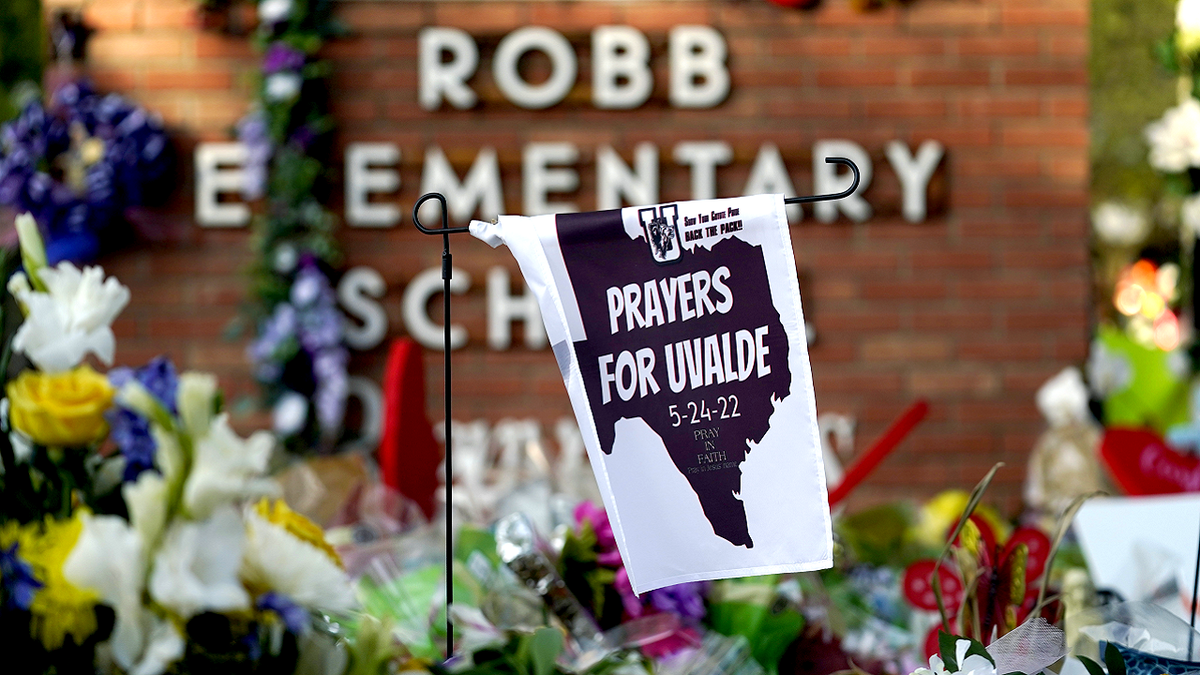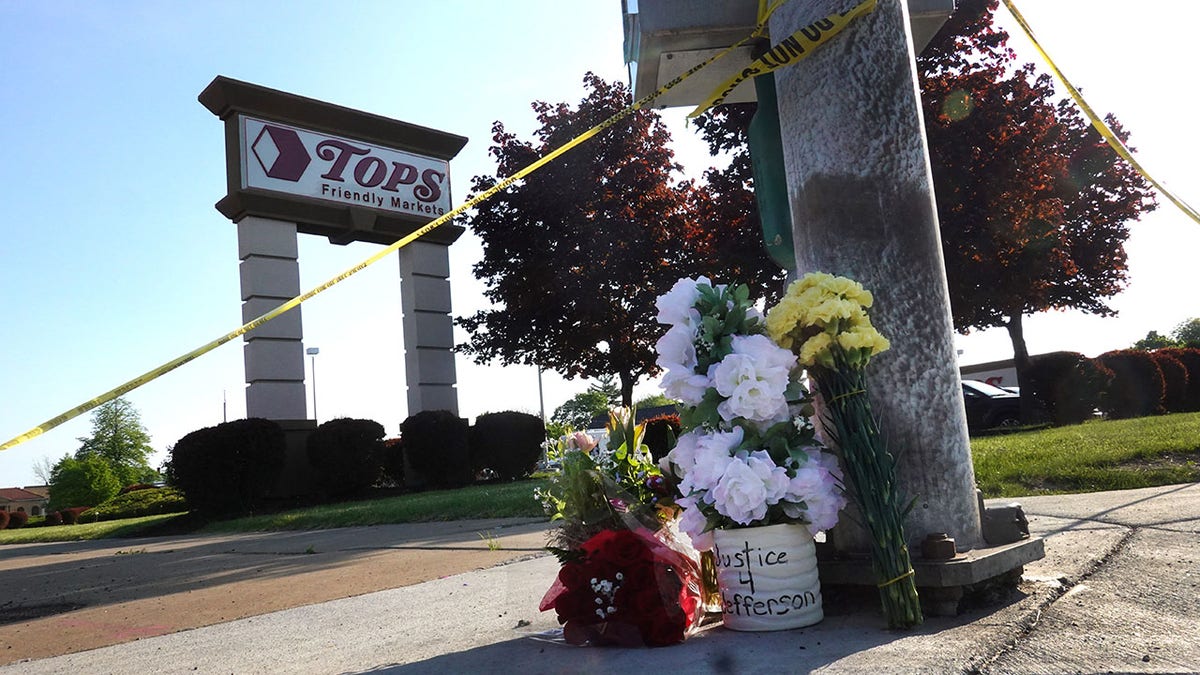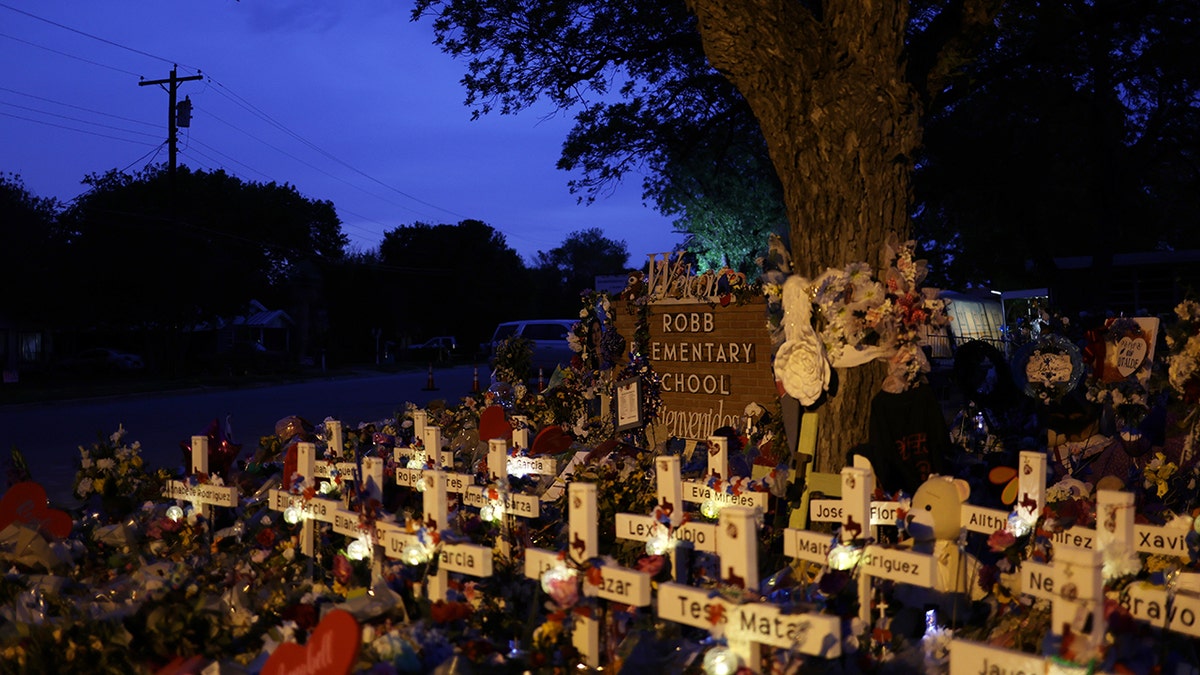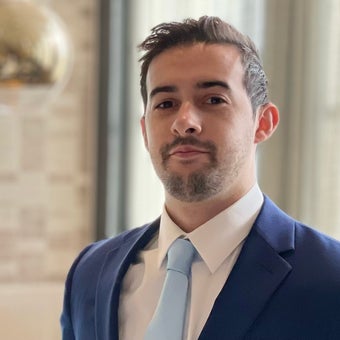Families of Uvalde school shooting victims testify before Congress
Chief congressional correspondent Chad Pergram reports the latest on the hearing from Capitol Hill.
Some in the media are calling for an "Emmett Till moment," floating the idea that the American people need to see pictures of kids murdered in mass shootings in order to get them on board with new gun control measures.
The argument in favor of showing graphic images of violence in the media to galvanize social change has often cropped up when major attacks have occurred within the United States. The pictures of the mutilated body of Emmett Till, the Black teenager tortured and lynched by two White men in Mississippi in 1955, were published in that year's issue of Jet magazine. A number of scholars have asserted that the media release helped to further the civil rights movement.
The most recent major example came when the media aired the disturbing video of the final moments of George Floyd’s life in 2020. The video prompted a national movement in favor of racial justice, culminating in Officer Derek Chauvin's conviction in Floyd's murder.
However, photos do not always elicit the same reaction in people, as discussed by University of North Carolina-Chapel Hill Journalism and Media Associate Professor Lois Boynton.
TEXAS SCHOOL SHOOTING: JUSTICE DEPARTMENT DETAILS REVIEW OF POLICE RESPONSE
"Some people might see a gruesome school shooting photo and believe that’s the reason we need additional gun regulations; others might look at the same photo and say that’s why we need more police presence in schools. Still others may find such photos revolting and serving no purpose whatsoever. And some might see news media’s involvement as just another way to attract eyeballs and get those coveted clicks. No doubt there are many other reactions to consider," she told Fox News Digital.
Boynton also noted the issue of technology, wherein photos spread across social media or aired on a reputable news outlet today may not represent the professional standards of the journalists when circulated in seconds across the globe. These standards, discussed by The Society of Professional Journalists, and the Radio Television Digital News Association, call for a minimization of harm and accountability consequences when choosing to circulate such photos, as Boynton pointed out.

A banner hangs at a memorial outside Robb Elementary School on Friday, June 3. (AP/Eric Gay)
"In particular, these codes ask journalists to consider how survivors and families of victims feel and what they believe," Boynton noted. "My guess is, these feelings and beliefs will also be nuanced. Some may feel like Mamie Till-Mobley, that the public must see the brutality inflicted on her son. Others may feel like some parents of murdered Sandy Hook schoolchildren, who petitioned for protection of victims’ and victims’ families’ rights to privacy."
John Temple, a journalist serving as the editor of Rocky Mountain News in Denver at the time of the Columbine massacre, wrote in "The Atlantic" on Monday about his wariness over publishing photos of dead children. He said the idea had the potential to "backfire."
Temple himself posted a picture of a dead student laying across the sidewalk outside Columbine High School in 1999. The photo garnered national attention, etched across the pages of magazines from New York to California. His staff’s photos of the massacre went on to win a Pulitzer Prize, but Temple did not seeek the permission of the parents to publish the famous one of a slain teenager on the sidewalk, his dropped soda can next to him.
"Maybe one day some editors will have a picture of a dead child even more powerful than the one we published that will finally make a difference," Temple wrote. "But in the meantime, it’s important to acknowledge that editors can’t publish photos they don’t have."
Temple asserted that in order to capture these kinds of photos they would either need to arrive on the scene before the police, or be allowed entry to the controlled crime scene – something the police are unlikely to do. The writer added that if a photo was acquired the photographer would need the permission of a parent.
"Even if a parent did agree to such a thing at the moment, journalists would have to weigh the ethics of asking someone to make such a decision. My experience is that parents want the last memory of their child to be in life, not in death," Temple added.
DEMOCRATIC HOUSE MEMBERS BOYCOTT UVALDE MOMENT OF SILENCE, DEMAND ‘REAL ACTION’ INSTEAD

Flowers are left at a makeshift memorial outside of Tops market on May 15, 2022, in Buffalo, New York. (Scott Olson/Getty Images)
The Boston Globe was less ambivalent in its opinion of releasing graphic images, calling it a "cop-out" and a "red herring" type of reaction that is not likely to garner significant support. The article was entitled "Stop asking parents to release graphic images of their children massacred in school shootings."
Speaking with Fox News Digital, retired FBI supervisory agent and CBS security and law enforcement analyst James A. Gagliano said members of the media should "tread carefully" when considering the release of such images. He said that their release could fuel "further erosion" of trust in journalism and "shed any pretense of impartiality." He also called on the news to be "bereft of bias and ideological slant."
"Adhere to the same journalistic standards you would adhere to if the perpetrators (or killing device) does not fit your worldview," he added. "There exists no justifiable reasoning to exploit these families' grief. Publishing these images won't bring these victims back, won't help solve this crime, and won't prevent another evil homicidal-maniac from attempting to commit another heinous crime like what occurred in Uvalde."
David Boardman, a former executive editor of The Seattle Times and the dean of Pennsylvania’s Temple University, recently came out on the other end of the spectrum. He said he would be in favor of releasing pictures, so long as parents agree.
"Couldn’t have imagined saying this years ago, but it’s time - with the permission of a surviving parent - to show what a slaughtered 7-year-old looks like. Maybe only then will we find the courage for more than thoughts and prayers," Boardman wrote on Twitter.
On Monday, CNN’s Jake Tapper made a similar statement on "The Late Show with Stephen Colbert." He noted that the media should never release photos that parents do not want published, but came out fervently against "sanitized" reporting.
Just a few weeks earlier, Tapper said this on the release of graphic images: "Maybe the shock to the system would prompt our leaders to figure out how to make sure society can stop these troubled men, and it’s almost always men, from obtaining these weapons used to slaughter our children."
MATTHEW MCCONAUGHEY PRAISED FOR WHITE HOUSE GUN REFORM REMARKS: 'DIFFERENT MESSENGER'

Wooden crosses are placed at a memorial dedicated to the victims of the mass shooting at Robb Elementary School on June 3, 2022 in Uvalde, Texas. (Alex Wong/Getty Images)
A number of other media outlets and guests pushed for the release of images, or at least discussed their viability.
"We’re always trying to balance the news value of an image and its service to our readers against whether or not the image is dignified for the victims or considerate toward the families or loved ones of those pictured," Meaghan Looram, director of photography at The New York Times, said. "We don’t want to withhold images that would help people to understand what has happened in scenarios like these, but we also don’t publish images sheerly as provocation."
A May 31 NPR interview between reporter Lelia Fadel and trauma surgeon Amy Goldberg also discussed the idea. Goldberg said that Americans have become desensitized to mass shootings and more specifically stories of gun violence. She said that the only way to "cut through the partisanship" is to look at these images.
"I think the citizens need to see the destruction of what these military-style weapons do, and that would be pictures. And I don't say that lightly. I don't say that with any disrespect, but I'm desperate. All the trauma surgeons need this to stop," she added.
CNN Newsroom host Ana Cabrera and pediatric trauma surgeon Dr. Chethan Sathya echoed the NPR discussion, asserting that country needs "an Emmett Till moment" in order to do something about gun violence.
The topic was also broached in The Washington Post, The New Yorker, The Intercept, MSNBC and Vanity Fair in the aftermath of the Uvalde, Texas, school shooting.






















